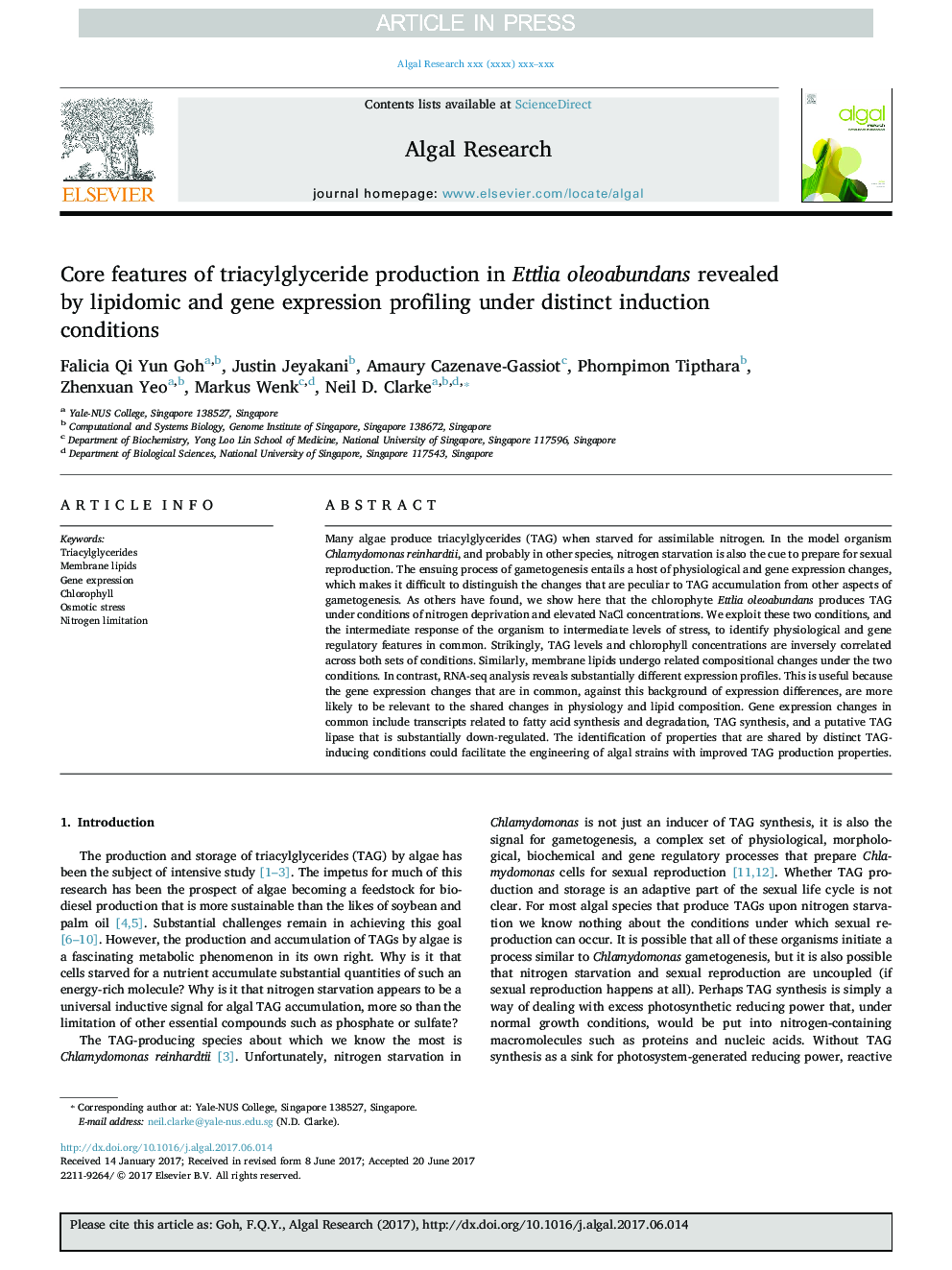| Article ID | Journal | Published Year | Pages | File Type |
|---|---|---|---|---|
| 5478314 | Algal Research | 2017 | 10 Pages |
Abstract
Many algae produce triacylglycerides (TAG) when starved for assimilable nitrogen. In the model organism Chlamydomonas reinhardtii, and probably in other species, nitrogen starvation is also the cue to prepare for sexual reproduction. The ensuing process of gametogenesis entails a host of physiological and gene expression changes, which makes it difficult to distinguish the changes that are peculiar to TAG accumulation from other aspects of gametogenesis. As others have found, we show here that the chlorophyte Ettlia oleoabundans produces TAG under conditions of nitrogen deprivation and elevated NaCl concentrations. We exploit these two conditions, and the intermediate response of the organism to intermediate levels of stress, to identify physiological and gene regulatory features in common. Strikingly, TAG levels and chlorophyll concentrations are inversely correlated across both sets of conditions. Similarly, membrane lipids undergo related compositional changes under the two conditions. In contrast, RNA-seq analysis reveals substantially different expression profiles. This is useful because the gene expression changes that are in common, against this background of expression differences, are more likely to be relevant to the shared changes in physiology and lipid composition. Gene expression changes in common include transcripts related to fatty acid synthesis and degradation, TAG synthesis, and a putative TAG lipase that is substantially down-regulated. The identification of properties that are shared by distinct TAG-inducing conditions could facilitate the engineering of algal strains with improved TAG production properties.
Keywords
Related Topics
Physical Sciences and Engineering
Energy
Renewable Energy, Sustainability and the Environment
Authors
Falicia Qi Yun Goh, Justin Jeyakani, Amaury Cazenave-Gassiot, Phornpimon Tipthara, Zhenxuan Yeo, Markus Wenk, Neil D. Clarke,
